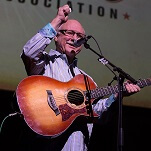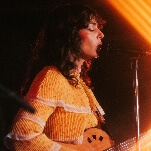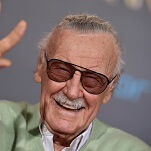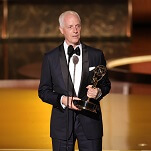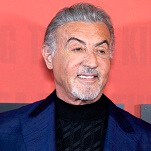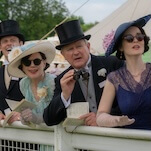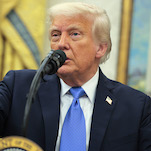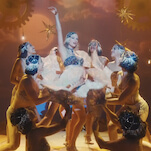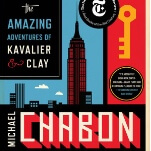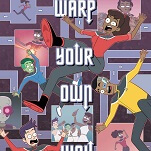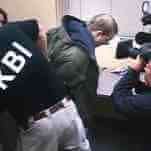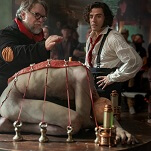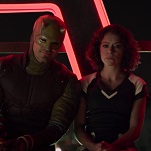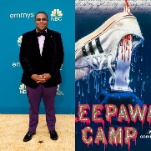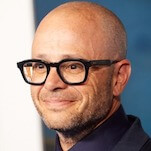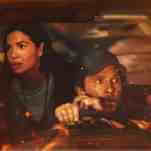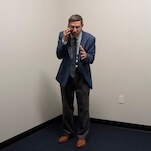Steven J. Ross introduces Hollywood Left And Right by directly confronting the stereotype that Hollywood is liberal. He acknowledges that many of the movie industry’s biggest stars are famous for their engagement with left-wing issues, but says Hollywood’s most consistent, successful political work has served conservatives and the Republican Party. Given examples like Charlton Heston’s advocacy influencing the 2000 election, or Ronald Reagan’s wildly effective political career, it’s hard to disagree with that point.
The book is divided into nine biographical chapters for 10 Hollywood players, from Charlie Chaplin to Arnold Schwarzenegger (with Ronald Reagan and George Murphy sharing their section). Five are from the left (Chaplin, Edward G. Robinson, Harry Belafonte, Jane Fonda, and Warren Beatty), and five from the right (Louis B. Mayer, Murphy, Reagan, Heston, and Schwarzenegger). Although there are some similarities between their biographies, there’s never a single obvious link as to why these people would all dedicate their lives to full-time movie-making and activism. Most had economically difficult childhoods, but not Fonda, whose father was a star. Most struggled to maintain families and careers simultaneously, but not Reagan, until much later in his life.
Yet there are fascinating parallels to be drawn in the book. Many of the subjects started becoming activists in order to defend apparently uncontroversial classical liberal ideals, like the dignity of the working man, freedom of speech, or opposition to Nazi Germany. But the ideological war between American capitalism and the Soviet Union’s communism left little room for such middle ground. Chaplin’s naïve internationalism came under fire for sounding like communism. Reagan started as a defender of free speech and acting unions, but Communist Party-USA controversies and schisms, both real and overblown, plus a marriage into a conservative family, quickly pushed him to the right. Robinson was an anti-fascist activist; he naturally praised the Red Army for fighting against Hitler, but post-war McCarthyism saw those quotes as a sin and destroyed his career. Heston was a Hollywood leader against segregation, but tours meeting the troops in Vietnam gave him a new focus.
The rough chronological approach also gives a broader picture of political history and technology together. Louis B. Mayer is credited with one of the earliest successful combinations of the two, as his MGM(ayer) studio put together false newsreels that discredited progressive gubernatorial candidate Upton Sinclair in 1934. Ross also associates Heston’s success at playing Moses both in film and in speeches with his ability to motivate millions of conservatives. Ross’s descriptions of how these people become politicized are universal, but the Hollywood’s effects are consistently evolving, which grants the book an interesting tension throughout each section.
Ross treats his subjects with sympathy and honesty, not letting them get away with mistakes, but finding room to understand those mistakes as well. Controversial figures like Reagan and Fonda are presented as humans instead of the demons the other side occasionally portrays. A politically charged book like this could easily slip into polemics on one side or toothless neutrality on the other, but Ross navigates by letting the facts speak for themselves, like the conservatives he cites winning electoral or political glory, while the liberals become famous for scandal as much as activism. Yet for all its intelligent organization of people, technologies, political trends, and persuasive films, Hollywood Left And Right struggles somewhat to distinguish itself rhetorically; its tone is pleasant, but academic. Still, that’s a small price to pay for a compelling survey of politics and celebrity.

